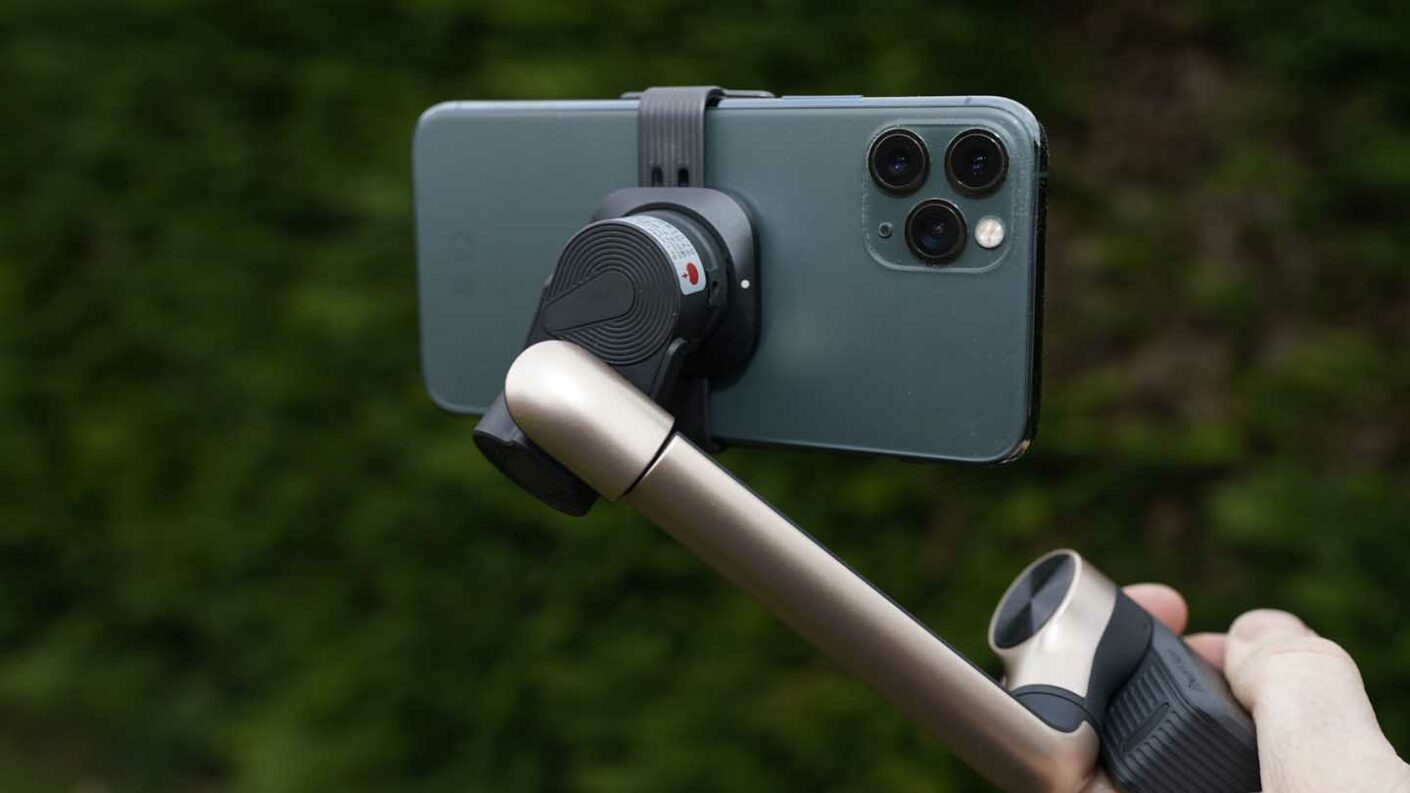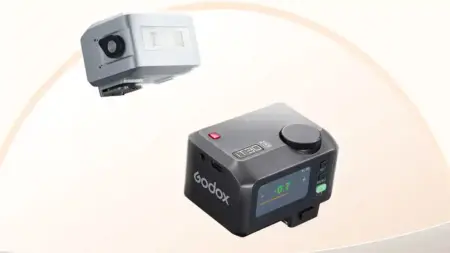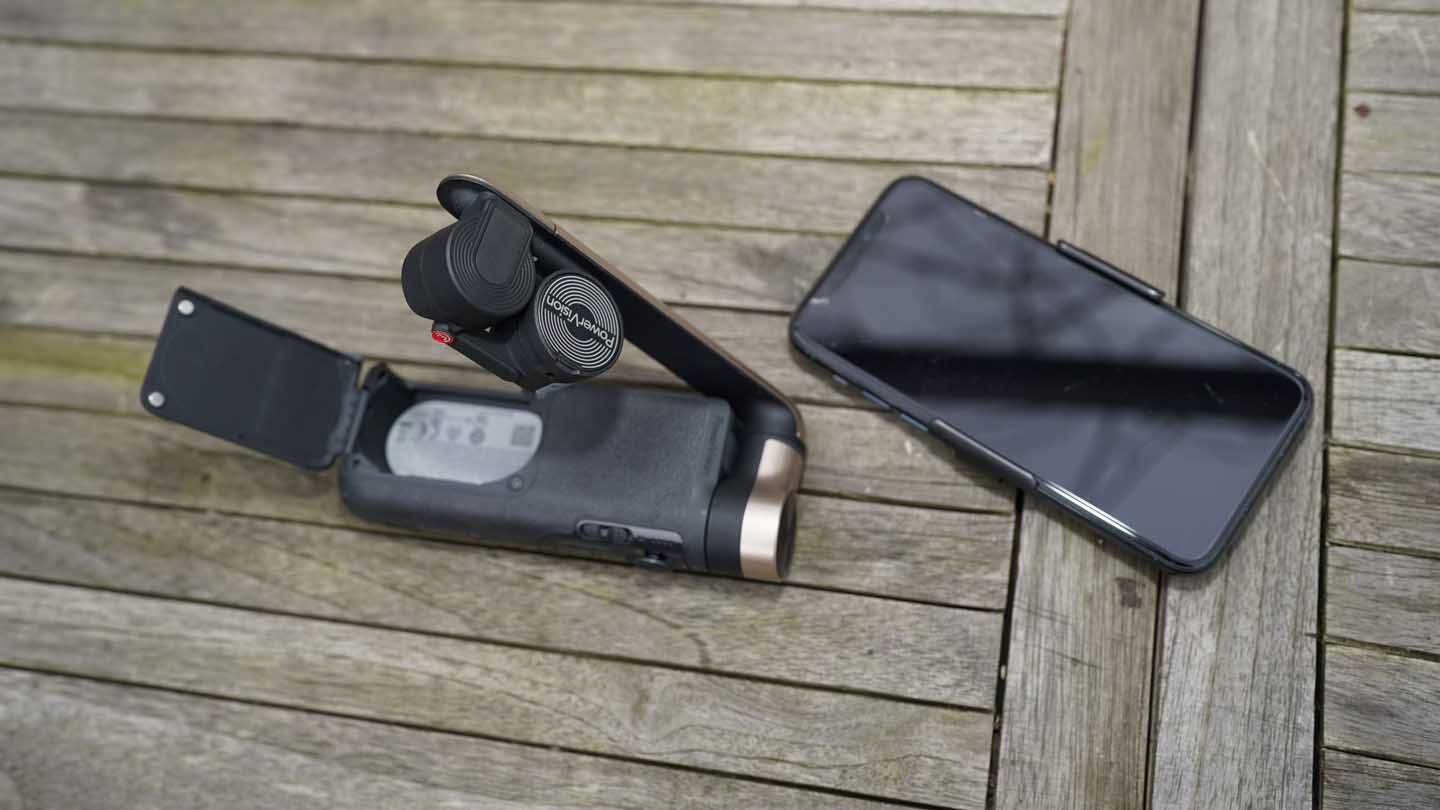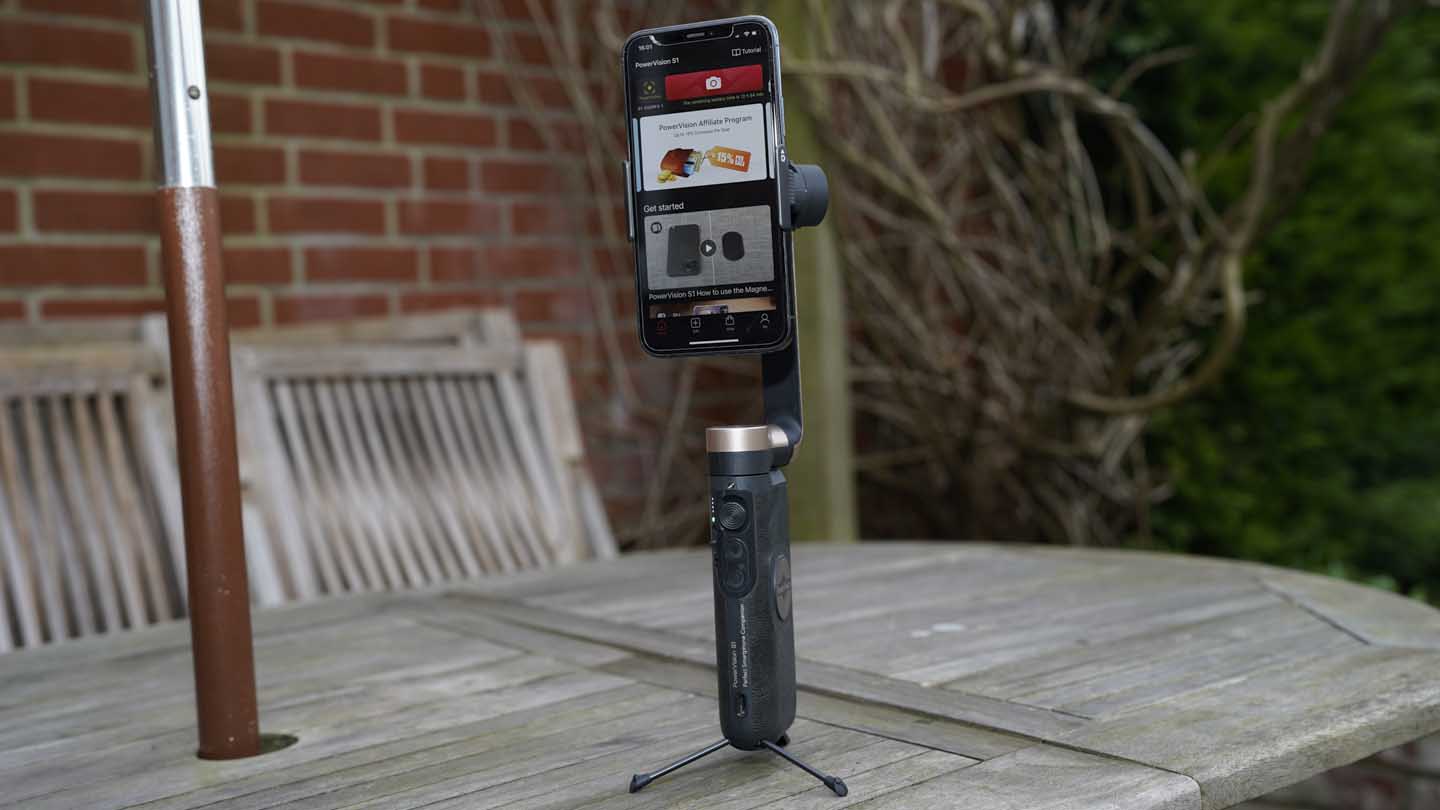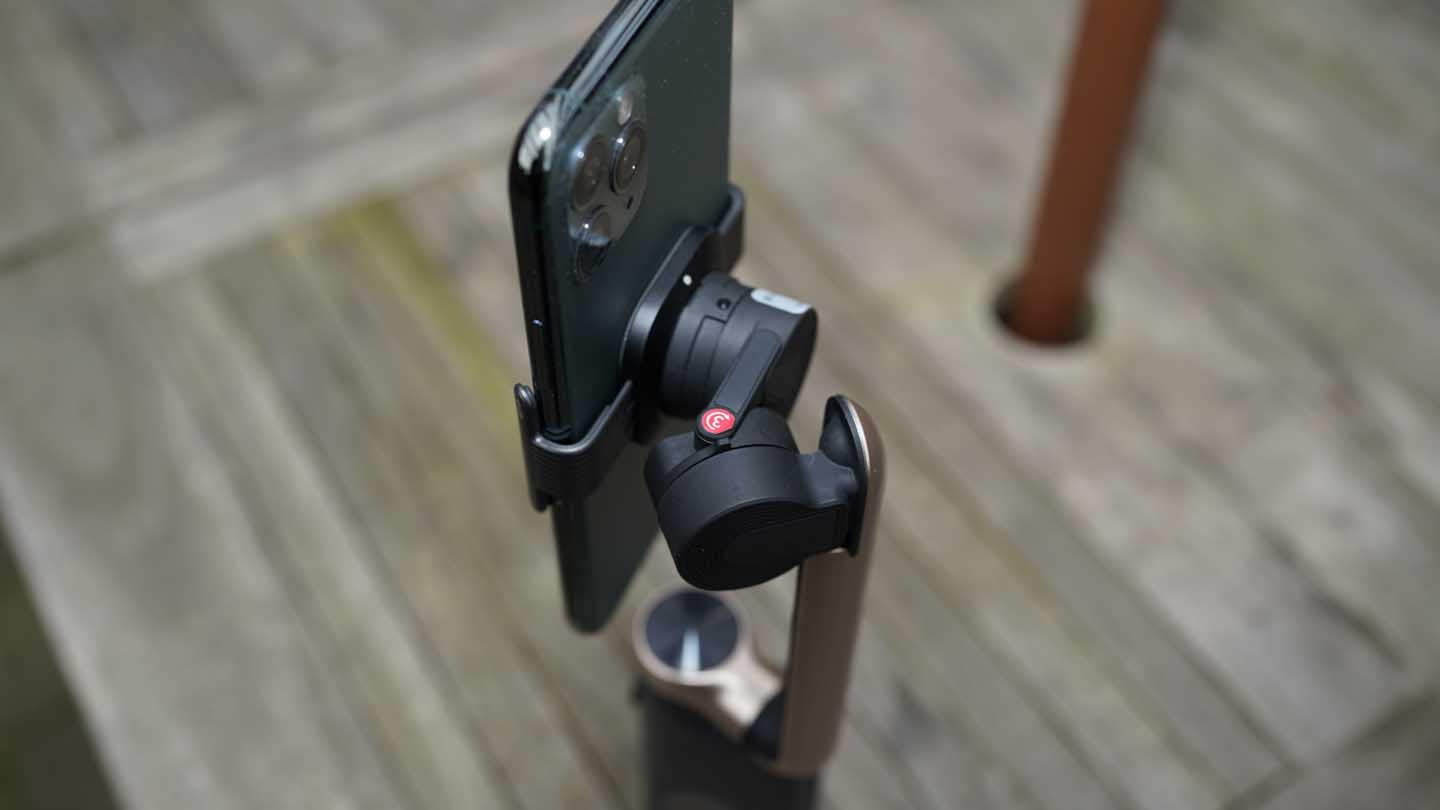Unfolding the PowerVision S1 instantly reveals just how innovative PowerVision has been with the design. Unlike other mobile gimbal stabilisers that are instantly recognisable for what they are, the S1 could be mistaken as a case for almost anything.
Flipping open the door before rotating around the arm, folding down the feet and finally popping the mobile phone into position takes a few seconds. Moreover, because the design is solid, there’s no arm wobble as you attach the phone.
Before powering on, the mobile App needs to be downloaded and installed “Vision+S1”. As the app loads, it shows a visual guide of unfolding the gimbal, which is useful and initially runs you through a few gesture controls that you can use.

Then, as you switch on the gimbal, a quick pairing process is carried out before the S1 is ready to use.
Lifting the gimbal off the table surface instantly shows a decent amount of power within the small motors. The iPhone 11 Pro that I used for the test was supported well, and moving to the left and right at a moderate speed was well compensated.
As a matter of course, I kept my phone in a hard protective case; I found that while the clamp of the S1 was large enough to hold the phone in the case, it restricted the quality of the balance.
For the best results, it was better to remove the phone case.
In use, the gimbal reacts quickly and is one of the better mobile gimbal stabilisers that I have used recently. The phone was well stabilised for normal use, and I was generally impressed.
I have found that there is a little position shift of the phone, which is annoying, and setting the gimbal down and just rechecking the phone’s balance generally helped to sort this out.
I also found that the amount of movement offered through the small joystick on the handle was a little restrictive compared with some of the other gimbals on the market, but then that is the price you pay for such a compact design.
When it comes to the stabilising ability of the S1, is on a par with the likes of the Zhiyun Smooth 5 but lacks the outright power and reaction speed.
As ever on the gimbal itself are a range of on-handle controls that enable you to start and stop recording, zoom in and out, and manually take control over the axis.
The delay between tapping record and the camera recording is minimal, and most direct actions through the app are fast. Generally, the App and gimbal respond quickly and reliably.
The zoom feature is activated by pushing up or down on the small side switch. It’s a simple approach that works, although it’s difficult to zoom in and out smoothly. However, it’s a nice option to have and does help to compose the shots you want.
The small joystick is perfectly positioned for thumb control. This is well designed and gives you the ability to tilt and swivel the camera’s position as required. While the joystick offers a good amount of control, it also highlights the limitations of some of the movements through the axis, especially the tilt.
In general use, the gimbal works incredibly well. It responds quickly and helps you to shoot smooth footage with your mobile phone easily.
It does hit its limitations when the speed of the motion picks up and when the size and weight of the mobile phone being used is close to the maximum payload limit.
When it comes to the app there are two app features that really appealed to me, and those are AI tracking and gesture control.
Both features can be switched on by tapping the icons on the app interface. Through the use of the App, I found that activating gesture control was incredibly useful as it enabled me to quickly activate the three most common features I needed from the App.
These included; start and stop recording, taking pictures, and a gesture of a flat palm will switch on the AI tracking.
As soon as the tracking has activated, a box will appear around the face of the person in the shot, and the gimbal will then keep up with that person’s movement. The gimbal’s speed is impressively fast, and if it loses the person, it does a decent job of reconnecting once that person comes back into the frame.
Another feature that I like within the preview window is the ability to touch to increase or decrease the exposure. It’s the same functionality you get from within the standard camera app, but it’s good to see.
PowerVision S1 shines out in the mobile gimbal stabiliser market as something different.
PowerVision has struck a balance between design, functionality, and performance, making the PowerVision S1 one of the best mobile gimbal stabilisers out there.


